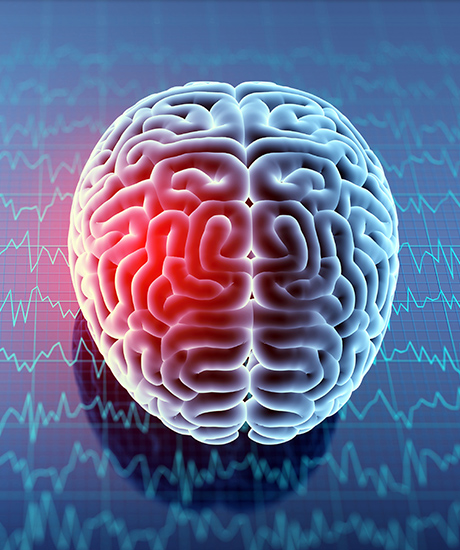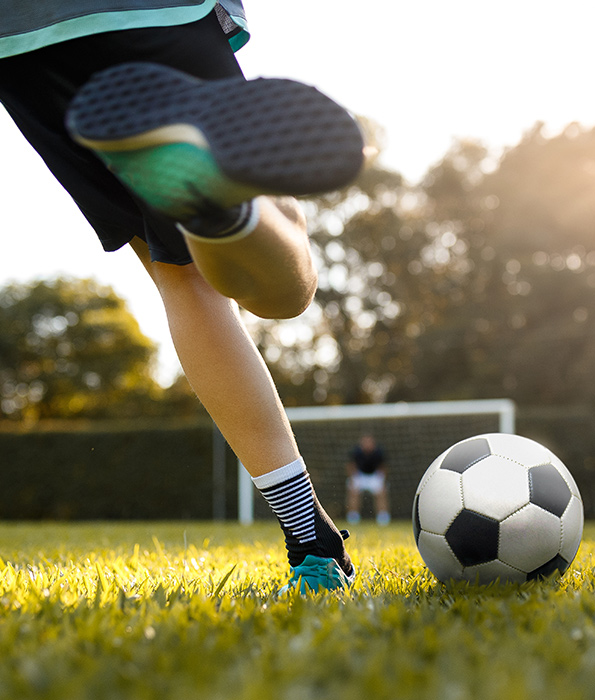
csba at issue
by Hugh Biggar
A personal approach provides important heads-up on concussion awareness
ith concussions a leading cause of injury to high school athletes, a new study has determined that using train-the-trainer instruction to raise awareness is one of the most effective means of education.
The researchers evaluated knowledge of concussions among 162 student athletes at six high schools in the San Juan Unified School District near Sacramento. Schools were split into three groups, with one having coaches take a workshop on concussion awareness and then sharing that information with students (a technique known as “train-the-trainer”), a second cohort providing students with concussion handouts and a video, and a final cohort of students receiving only an information sheet as required under state law. The survey was given before and after fall sports season to measure the effectiveness of each approach.
Ultimately, the Concussion Education for High School Athletes study determined the train-the-trainer method as having the most impact. In the preseason survey, 42 percent of the student athletes on average said they knew about concussions but didn’t know what to do about them. In the follow-up questionnaire at the end of fall, students instructed through the train-the-trainer method showed the largest improvement in concussion awareness and response. By comparison, the percentage of students who knew about concussions but did not know how to best respond grew in the information sheet-only group.
“This highlights how vital improved concussion awareness and education is for young athletes,” said Aradhana Verma, a third-year medical student at California Northstate University College of Medicine and a co-author of the study.
While the survey centered on high school football players, concussions are common for both boys and girls of all ages in sports ranging from soccer to volleyball to wrestling to lacrosse. The study, for instance, found that 82 percent of the surveyed San Juan USD students said they had either experienced a concussion or knew someone who had. Recent research has determined such hits can cause brain damage, especially if an athlete sustains multiple blows to the head. Health consequences over time can include chronic traumatic encephalopathy (CTE), depression, dementia and memory loss. In response, public health officials and others are raising awareness of the issue and developing best practices to spot and respond to head injuries. In one example, the California Interscholastic Federation recommends a multi-tiered approach including teaching safe tackling techniques and improving concussion-awareness education among teachers, parents, coaches, administrators, athletes and athletic directors.

The study found that 82 percent of the surveyed San Juan USD students said they had either experienced a concussion or knew someone who had.
Although California has the second highest number of interscholastic athletes nationally, with more than 800,000, one significant problem school districts face is a lack of oversight. California is the only state that does not require licensing of athletic trainers, with each district and school having different standards for trainers, and also relies heavily on part-time staff to fulfill the roles of athletic trainers and coaches. Both situations create gaps in ensuring staff are trained and certified in identifying concussion symptoms.
California is the only state that does not require licensing of athletic trainers with each district and school having different standards for trainers.
California is the only state that does not require licensing of athletic trainers with each district and school having different standards for trainers.
The study determined the importance of person-to-person communication through workshops and the value of mentoring. The sessions included a focus group component, where coaches and athletic directors discussed challenges they faced in delivering concussion information.
Verma stressed “the positive effect of the train-the-trainer model, as compared to a neutral source of information, and the importance of information provided through a trusted role rather than delivered through videos and handouts.”
This train-the-trainer model involves master trainers who teach high school coaches on how to properly educate high school athletes on concussion awareness. The workshops in San Juan USD highlighted information in particular from the Centers for Disease Control and Prevention initiative, Heads Up for Youth Sports. Each coach then shared what they learned and the importance of concussion safety with their student athletes.
“The study was very informative and taught our coaches and district personnel the importance of concussion education,” said Ron Barney, athletic director for San Juan USD. “My biggest conclusion is we are more aware and have made better efforts to be aware [of] and prevent concussions. If a concussion occurs, we have improved our concussion protocol of making sure the student athlete is over the concussion before returning to play.”
Special thanks to the research team behind the Concussion Education for High School Athletes study at California Northstate University College of Medicine — Alana Freifeld, Rohaum Hamidi, Elizabeth Phillips, Aradhana Verma, Jose Puglisi and Kamaljeet Khaira — for contributions to this article.
Resources
Centers for Disease Control, Heads Up for Youth Sports www.cdc.gov/headsup/youthsports/
Concussion Education for High School Athletes, California Northstate University College of Medicine
Concussions in Student Athletes and How to Reduce Risk, California School Boards Association: www.csba.org/ConcussionsBrief